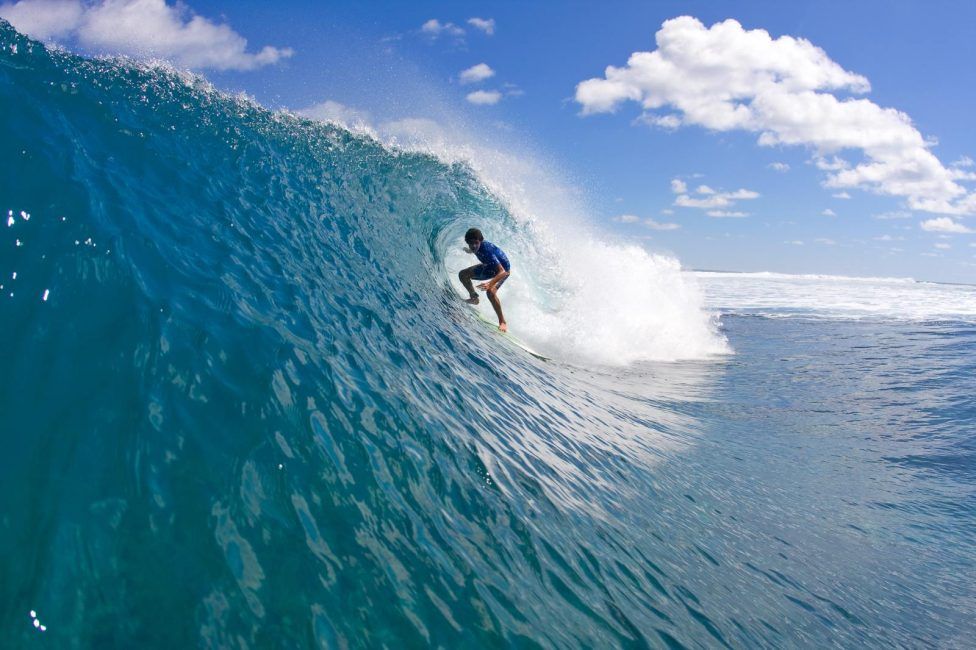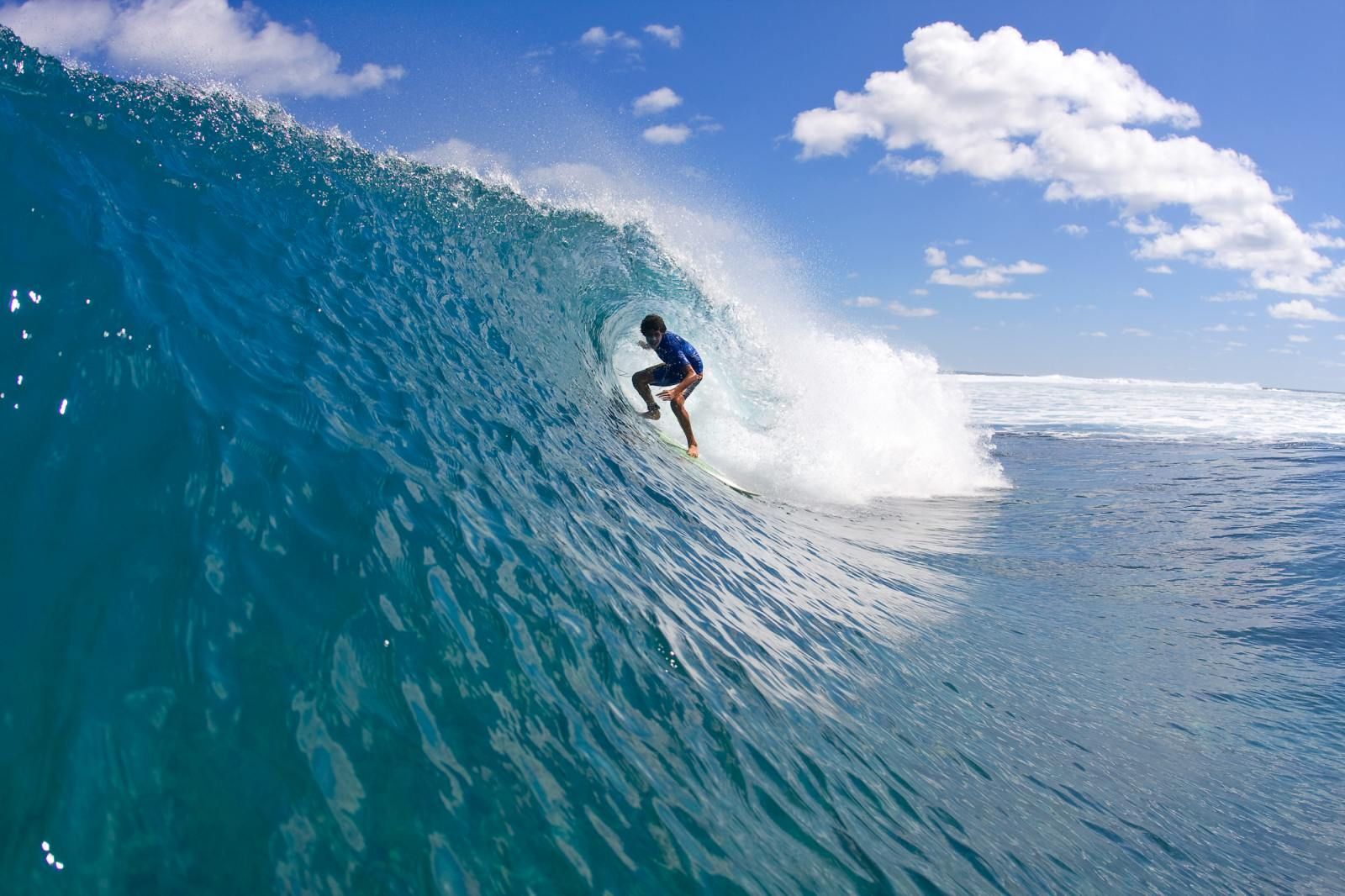Essential Tips for Surfing in Tonga
When looking for “alternative” places to surf, Tonga is definitely a nation of islands that stand on top. The little-known surf destination is scattered with reefs that create idyllic curling waves begging to be surfed, especially for intermediate to advanced surfers. As a young surf destination, however, it will test surfers’ intrepidity. So get an idea of what surfing in Tonga is all about with this quick list of Tonga surf tips!
1. Options for Beginners are Limited
First of all, Tonga is not a place to learn how to surf. There are no surf schools nor even surfboard hire – more on that later. Plus, the waves suitable for beginners are limited, as almost all of Tonga’s surf breaks are on reefs (which falling into is not fun). However, when swell conditions are calmer, you can find suitable beginner waves off Ha’atafu and Kanokupolu Beach on Tongatapu, as well as beginner-friendly waves in most swell conditions at Houmale’eia Beach in Ha’apai. In short, Tonga is an awesome surf destination for intermediate to advanced surfers.
2. Have Reef Protection…
As mentioned, almost all of the surf waves in Tonga are reef breaks so you’re going to want to wear some rubber. Reef shoes and a wetsuit/rashie are a good start. If you’re hitting some of the gnarlier waves in Vava’u or breaks like Kamikaze’s at Ha’atafu Beach, then you should probably even wear a helmet.
3. … And Protect the Reef
Of course, you don’t want to damage the ocean that’s providing all of the fun, so make sure your sunscreen choice is “reef-safe”. Avoid wearing sunscreen that has oxybenzone which can damage and sometimes kill young coral. Check out our sunscreen recommendations in the 10 Best Reef-Safe Sunscreens for Tonga.
4. You Will Need to Be Independent
Unfortunately after the 2022 tsunami, there are no longer any real surf resorts in Tonga. Although the days of effortlessly rocking up to your resort with surf guides and boating services especially for surfers are gone, surfers can still enjoy paddling out to reef breaks off Tongatapu and independently arrange boat transport in Vava’u. We have listed some resorts that are more helpful to surfers in the 5 Best Surf Resorts in Tonga.
5. Bring Your Own Surfboard
At the time of writing, surfboard hire in Tonga is, well, non-existent. There’s nothing more to say than bring your own! If you have several boards (lucky you), then we have more tips on which board to bring in the point below…
6. Bring the Board You’re Most Comfortable Riding
Now that you know that you need to bring your own board, the question is: which board should you bring? With swell peaks being anywhere between 2.5-3 m (6-10 ft) to 0.6-1.2 m (2-4 ft) in smaller conditions, it’s hard to predict the best board to bring. Your best option is to just bring the board you’re more comfortable on.
7. You Can Surf Year Round…
Tonga experiences two distinct seasons which bring their own surf conditions. Winter (April to October) is arguably the best time for surfing in Tonga, where southerly groundswells open up the majority of surf breaks across the islands. Summer (November to March) is when the northerly swells from the North Pacific affect surf waves in Tonga, with some big days produced due to cyclone activity. Learn more about the surf seasons in The Best Time to Surf in Tonga.
8. … But in Vava’u, it May Be Easier to Surf Before the Whale Season
Vava’u has had a major tourism shift in recent years to solely focusing on whale swimming during the whale season, between July and October. This usually means that boats are hard to arrange for surfing during this time. What’s more, many island resorts in Vava’u, which are the closest to surf breaks, close after the whale season. If you want to surf in Vava’u, it’s best to aim for early in the winter season (April and June) just as resorts are opening but before the whales arrive. Alternatively, boat charters can be arranged from Vava’u’s main hub, Neiafu, which comes with the disadvantage of a longer ride out, but is often easier to organise.
9. Tonga’s Surf Waves are Reef Breaks
The surf waves in Tonga are mostly reef breaks, so you need to be prepared to paddle or take a boat to get to the surf. In Tongatapu, it’s possible to paddle out some 100 m (330ft) to get to the surf breaks from Ha’atafu and Kanokupolu Beach, while the rest can only be reached by boat. Especially in Vava’u, all the breaks require boat travel. Only in places like Houmale’eia Beach in Ha’apai can you ride waves (albeit gentle waves) from the beach. Learn more about the breaks in the 10 Surf Breaks in Tongatapu and 10 Surf Breaks in Vava’u.
10. The Best Time to Surf is Three Hours on Either Side of High Tide
Also connected to the fact that Tonga’s surf breaks are on reefs is that it’s best to surf within three hours of either side of high tide. This is generally the safest time to be out surfing. If you’re a beginner at one of the beginner breaks, limit that to two hours on either side of high tide.
More Tonga Surf Tips
That’s it for our list of Tonga surf tips. For more essential surf advice for The Kingdom, check out the following guides:
Finally, if there’s anything we’ve missed, you’re likely to find it in The Complete Guide to Surfing in Tonga.
Author
Laura (Lola) S.
This article was reviewed and published by Laura, editor in chief and co-founder of Tonga Pocket Guide. Since arriving solo in the South Pacific over 10 years ago with nothing but a backpack and a background in journalism, her mission has been to show the world how easy (and awesome) it is to explore a paradise such as Tonga. She knows the islands inside-out and loves sharing tips on how best to experience Tonga’s must-dos and hidden gems. Laura is also editor of several other South Pacific travel guides.

